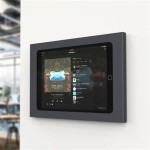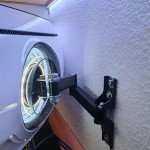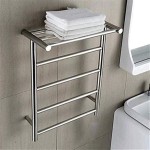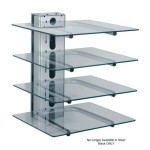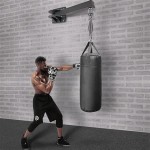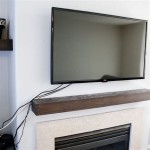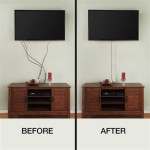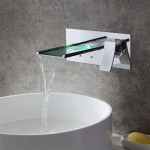Wall Mounted Display Case With Shelves: An Elegant Solution for Showcasing and Protecting Valuables
Wall mounted display cases with shelves offer a practical and visually appealing method for showcasing collectibles, artifacts, awards, merchandise, or personal treasures. These cases provide protection from dust, damage, and theft, while simultaneously enhancing the aesthetic appeal of the displayed items and the surrounding environment. The versatility of wall mounted display cases makes them suitable for a wide range of settings, including homes, museums, retail stores, schools, and offices. Understanding the different types, materials, security features, and design considerations is crucial when selecting the appropriate display case for specific needs.
Key Point 1: Types of Wall Mounted Display Cases
The market offers a variety of wall mounted display cases, each catering to specific purposes and aesthetic preferences. The selection process should involve a careful evaluation of the items to be displayed, the available space, and the desired visual impact. Common types include:
Framed Display Cases: These cases typically feature a frame made of wood, metal, or acrylic, surrounding a glass or acrylic front. The frame adds a decorative element and can be chosen to complement the surrounding décor. Framed cases often offer a more traditional or formal appearance.
Frameless Display Cases: As the name suggests, these cases lack a visible frame, offering a clean and modern aesthetic. The absence of a frame allows for maximum visibility of the displayed items, making them a popular choice for showcasing valuable or visually striking objects. Frameless cases are often constructed with tempered glass for added durability and safety.
Sliding Door Display Cases: These cases feature sliding glass or acrylic doors, allowing for easy access to the displayed items while still providing protection. Sliding door cases are particularly useful in areas with limited space, as the doors do not swing outward. They are commonly used in retail settings for displaying merchandise.
Hinged Door Display Cases: Hinged door cases offer a more traditional access method, with doors that swing open. These cases may be more suitable for larger items or displays that require frequent rearrangement. The hinges can be mounted on the left or right side, depending on the desired orientation.
Lighted Display Cases: Incorporating integrated lighting, such as LED strips or spotlights, can significantly enhance the presentation of displayed items. Lighting highlights the features and details of the objects, making them more visually appealing. Lighted display cases are particularly effective for showcasing jewelry, precious stones, or artwork.
Key Point 2: Materials and Construction
The materials used in the construction of a wall mounted display case significantly impact its durability, aesthetic appeal, and overall value. Selecting high-quality materials ensures that the case will provide adequate protection for the displayed items and maintain its appearance over time.
Glass: Tempered glass is a popular choice for display case fronts and shelves due to its strength and safety. Tempered glass is significantly more resistant to breakage than regular glass, and if it does break, it shatters into small, relatively harmless pieces. Options like low-iron glass further enhance visibility by reducing the greenish tint commonly associated with standard glass. Standard glass can be used in less crucial areas but tempered glass is always recommended for safety.
Acrylic: Acrylic is a lightweight and shatter-resistant alternative to glass. It is often used in display cases designed for high-traffic areas or environments where safety is a primary concern. Acrylic offers excellent clarity and can be easily molded into various shapes and sizes. While it is more scratch-prone than glass, scratch-resistant coatings are available.
Wood: Wood is a classic material for display case frames and shelves, providing a warm and elegant aesthetic. Hardwoods such as oak, maple, and cherry are commonly used due to their durability and attractive grain patterns. The wood can be stained or painted to match the surrounding décor.
Metal: Metal frames, typically made of aluminum or stainless steel, offer a sleek and modern appearance. Metal frames are durable and resistant to corrosion, making them suitable for a variety of environments. Metal can be powder-coated in various colors to complement the displayed items or the surrounding décor.
Shelving Materials: In addition to glass and wood, shelves can also be made of metal or acrylic. The choice of shelving material depends on the weight of the displayed items and the desired aesthetic. Adjustable shelves offer flexibility in arranging the display, allowing for items of different sizes to be accommodated.
The construction of the display case should be robust and well-engineered to ensure stability and durability. High-quality hardware, such as hinges, latches, and mounting brackets, is essential for reliable performance. The case should be securely mounted to the wall using appropriate anchors and fasteners, taking into account the weight of the case and the items to be displayed.
Key Point 3: Security and Environmental Considerations
Protecting the displayed items from theft, damage, and environmental factors is a crucial function of a wall mounted display case. Incorporating security features and considering environmental control measures can significantly enhance the preservation and safety of the showcased objects.
Locking Mechanisms: Display cases can be equipped with various locking mechanisms to prevent unauthorized access. Keyed locks are a common and reliable option, while combination locks offer keyless security. Electronic locks provide advanced security features, such as access control and audit trails. The choice of locking mechanism depends on the level of security required and the frequency of access.
Tamper-Resistant Hardware: Using tamper-resistant screws and fasteners can deter attempts to disassemble or remove the display case. These specialized fasteners require unique tools for removal, making it more difficult for unauthorized individuals to gain access.
Security Glass: Laminated security glass offers enhanced protection against breakage and intrusion. Laminated glass consists of multiple layers of glass bonded together with a plastic interlayer. If the glass is broken, the interlayer holds the fragments in place, preventing the glass from shattering and providing continued security.
Dust and Moisture Control: Display cases should be designed to minimize the entry of dust and moisture, which can damage or degrade displayed items over time. Sealing the joints and edges of the case can help to create a barrier against these environmental factors. Desiccants can be used to absorb moisture inside the case, maintaining a stable and dry environment.
UV Protection: Ultraviolet (UV) radiation can fade and damage sensitive materials, such as textiles, paper, and artwork. Using UV-filtering glass or acrylic can protect displayed items from the harmful effects of UV light. UV-filtering films can also be applied to existing glass surfaces to provide added protection.
Climate Control: For sensitive items that require precise temperature and humidity control, climate-controlled display cases are available. These cases incorporate heating and cooling systems, as well as humidity control devices, to maintain a stable and optimal environment. Climate-controlled cases are commonly used in museums and archives for preserving valuable artifacts.
The selection of a wall mounted display case should involve a thorough assessment of the security and environmental risks associated with the displayed items. Implementing appropriate security features and environmental control measures can ensure the long-term preservation and protection of valuable objects.
Beyond the core considerations of types, materials, and security, the overall design and installation of a wall mounted display case demand attention to detail. The size and dimensions of the case must be carefully considered in relation to the available wall space and the size of the displayed items. Ergonomic factors should also be considered, ensuring that the case is mounted at a comfortable height for viewing and access. The installation process should be carried out by qualified professionals to ensure that the case is securely and safely mounted to the wall. Leveling the case properly is essential for aesthetic appeal and to prevent stress on the structure. Concealing wiring and mounting hardware can further enhance the overall appearance of the display. Regularly cleaning the display case and maintaining the lighting system are important for preserving its aesthetic appeal and ensuring optimal visibility of the displayed items.

Swingframe Designer Metal Framed Wall Display Case Glass Shelves With A 8 Inch Deep Cabinet Interior 25 Sizes

Homcom Modern Flair 5 Tier Wall Display Cabinet With 2 Glass Doors 4 Adjustable Shelves For Shot Collection White Finish Aosom Canada

White Wall Hanging Glass Display Cabinet 48 Etúhome

Homcom 5 Tier Display Cabinet Glass Case With 2 Doors And Adjustable Shelves Wall Mounted Grey

Unbranded 5 Tier Grey Wall Mounted Display Cabinet Decorative Box Glass Case With 2 Doors And Adjustable Shelves Xz P155587

Swingframe Designer Wood Wall Mounted Display Case With Shelves 3 Deep

Wall Mount Wooden Mirrored Counter Top Single Shelf Display Case

Wall Display Case By Dreieck Design Vitro

36 W Wall Mount Display Case Standard Laminate Led Lights

Gallery Solutions 17x32 Shot Glass Display Case With Hinged Front In Black 16fw1057

